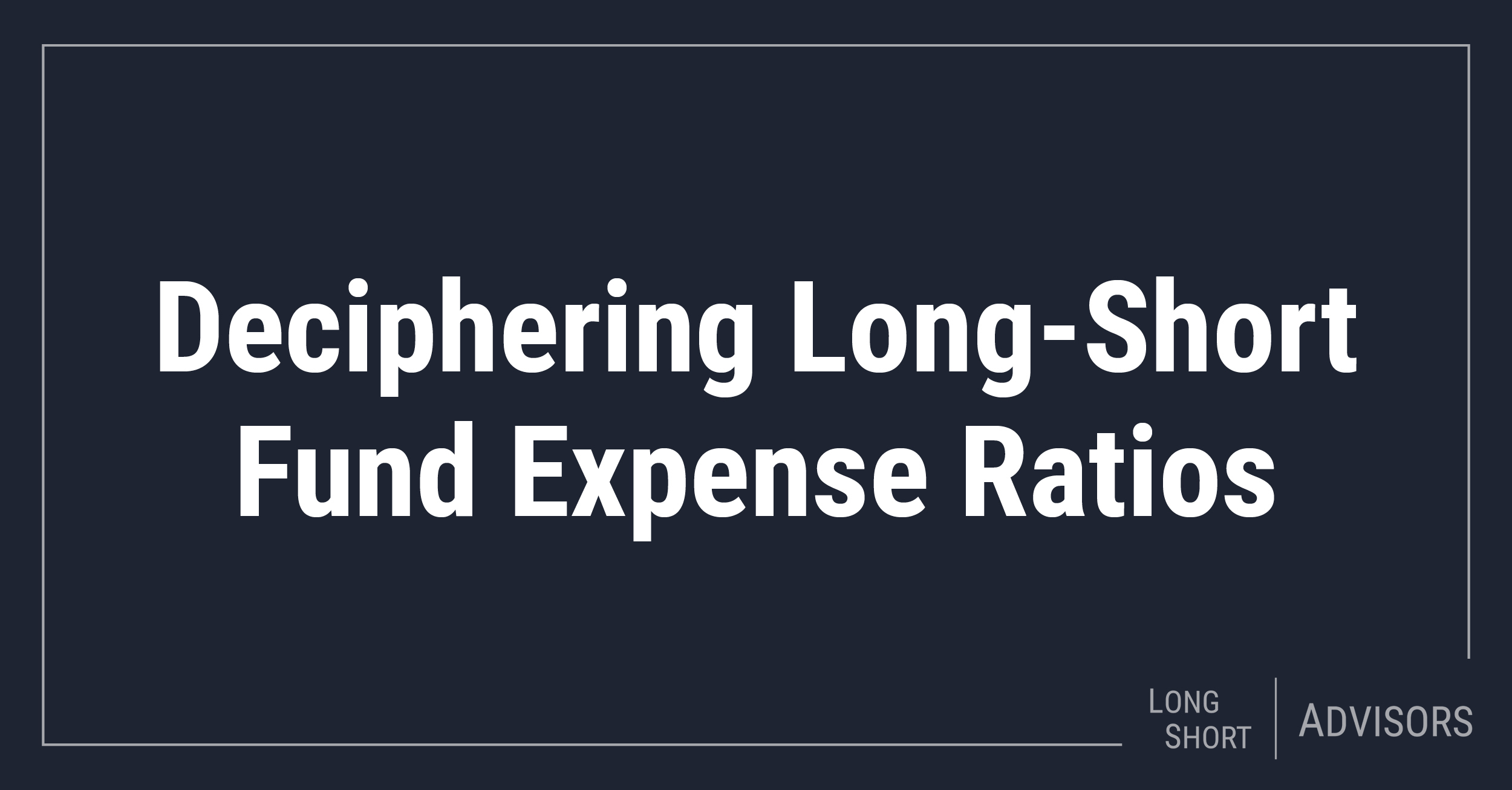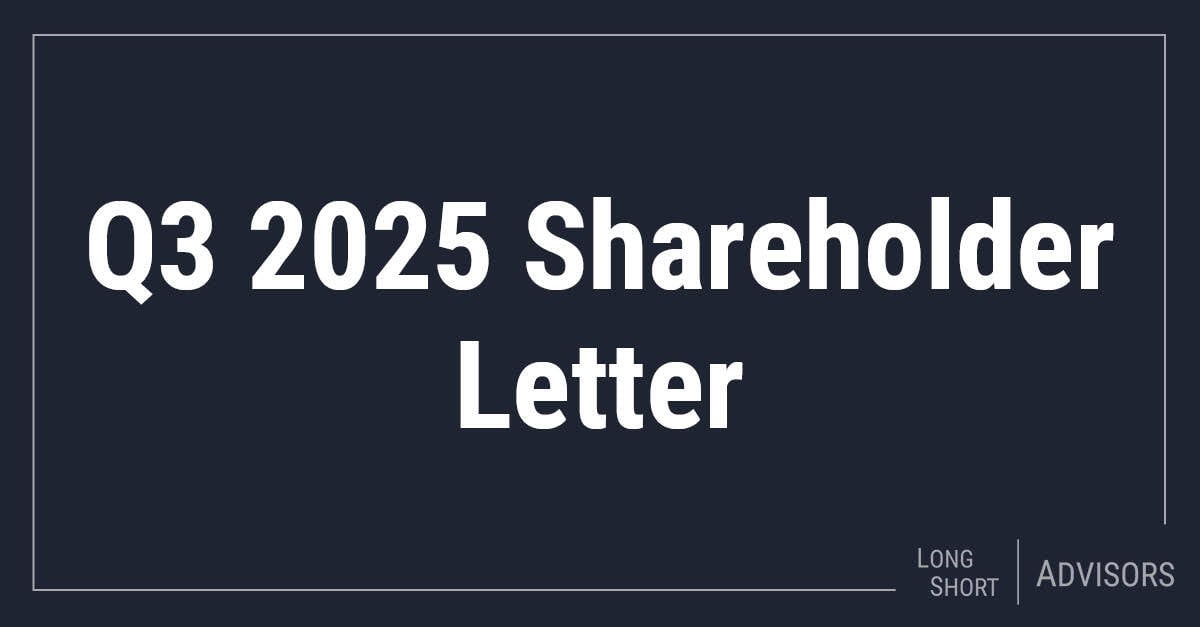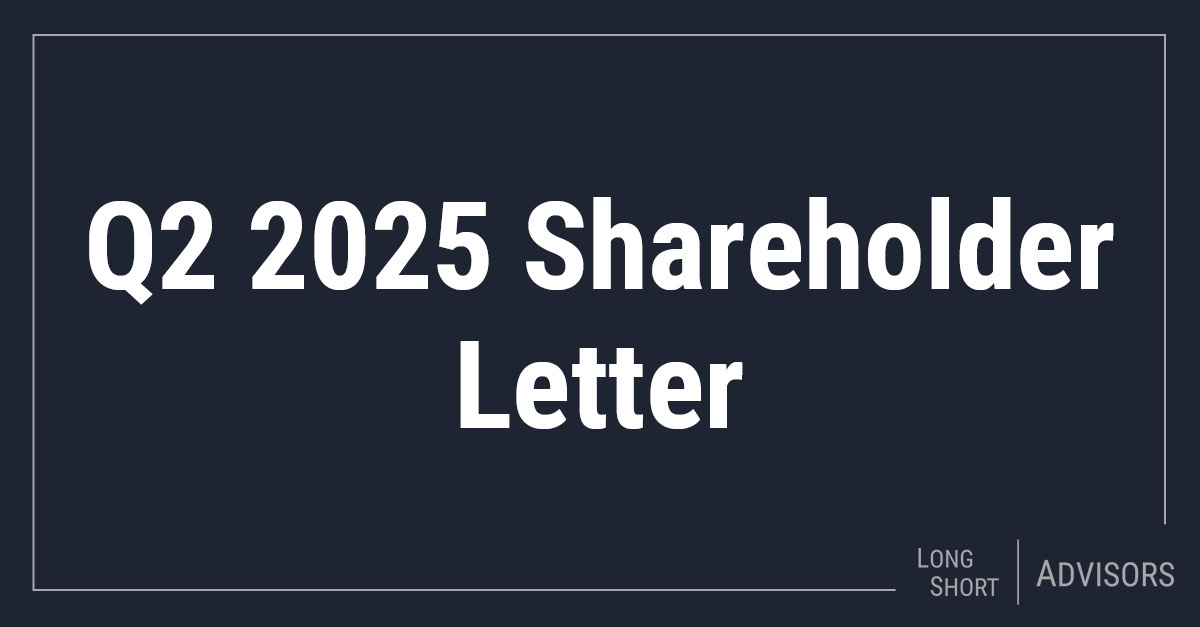SOME SEC RULES HAVE ADDED TO CONFUSION FOR LONG-SHORT FUNDS
There is much to like about well-managed long-short equity funds. Fund managers can seek to generate alpha on both long and short positions, expanding the investment opportunity set in the market. The ability to short sell lowers a portfolio’s volatility, which makes it more likely that emotional investors will stay in their seats during bear markets such as in 2022. This helps long-term investors earn the equity risk premium across market cycles.
Unfortunately, some new rules regarding the calculation of long-short fund expense ratios introduced by the SEC several years ago have unwittingly reduced fund transparency for investors, made it more difficult to analyze underlying portfolios, and distorted the investment practices of some fund managers. And the increased complexity and opaqueness induced by the change in SEC rules haven’t lowered investor costs.
The New Expense Regime
The rule change requires long-short funds to include short interest and dividend payments in their net expense ratios. Prior to analyzing the implications of this shift, let’s review the mechanics of what occurs in a short sale: The investor borrows shares and sells them on the market, hoping to earn a profit later by buying back the shares at a lower price. The investor doesn’t own the security but pays a spread to the broker that facilitates the lending of shares. In addition, the short borrower of stock must pay dividends issued during this period to the stock’s owner of record. The dividends paid by the short borrower must be included in the fund’s expense ratio.
What is confusing about this SEC policy? It creates several issues. Let’s start with the short interest aspect. When a long-short manager short sells stocks, the proceeds, or collateral, are typically held in cash or cash-equivalent investments that, since the surge in interest rates in 2022, now earn a significant amount of short interest rebate for the portfolio—but this cannot be used to offset the dividend expense line item recorded in the fund’s net expense ratio. Thus, the healthy income on the interest from, say, a 30% short position cannot be used to offset the dividend expense.
If this rule seems unfair, the implication of the dividend expense policy is even worse. All things equal, a fund that is, for instance, 60% net long, will almost certainly earn more in dividend income than it coughs up in dividend expenses to shareholders of record on securities the fund has sold short. But again, the dividend expense must be included in the fund’s net expense ratio whereas dividend income for the same fund cannot be used to net out dividends. There’s also another more-subtle flaw in the dividend expense rule. When a stock goes ex-dividend, it drops in price, which means the short position gains in value. In fact, this dividend event is basically a wash for the investor, but the dividends paid is the only line entry recorded in net expenses.
Distorting Fund Behavior
To top it all off, the SEC rule change for net expense calculation has resulted in some unintended changes in investment strategy by a number of long-short fund managers that create the illusion of lower expenses and actually increase portfolio complexity, lack of transparency and even risk.
Here’s what we mean. For several reasons, including the difficulty of and unusual skills required for adroit short selling of securities, management fees for 40 Act long-short funds tend to be relatively high, say 1.5% to 1.75%. The interest and dividend expense for short selling can easily add 75 to 100 basis points to the net expense ratio (on top of the management fee) calculation as mandated by the SEC. Say a fund manager seeks to maintain the appearance of a net expense ratio under the threshold of 2%, perhaps to pass a 2% expense ratio filter for an investor or financial advisor. To achieve the illusion of lower expenses, a number of managers have stopped taking individual short positions in their portfolios, and instead are using total-return swaps, options, or other vehicles to short markets or securities. These methods obviously come with a cost, but not costs (unlike interest and dividends) that must be included in the stated net expense ratio. There are, in fact, several downsides to (for instance) a total-return swap strategy, such as making it more difficult to control risk and to understand what’s in the portfolio and at what economic cost. It also eliminates the potential for tax-loss harvesting with individual shares, reduces flexibility for the manager, and adds new risks of derivatives markets, such as counterparty and pricing risk. In real life, derivatives such as total return swaps quite possibly increase the cost to investors while they create the illusion of lower expenses per the SEC rule.
Conclusion
How should investors and financial advisors analyze and evaluate long-short funds in order to get to the bottom of the expense confusion? One way is to essentially ignore the issue and simply focus on a fund’s net return, along with other relevant risk-control metrics such as volatility and maximum drawdowns. Net return is net return: the SEC has, unfortunately, added a layer of complexity to the fee structure, but this does not in any tangible way change a long-short fund’s expenses or net return.
16237831-UFD-01312023








